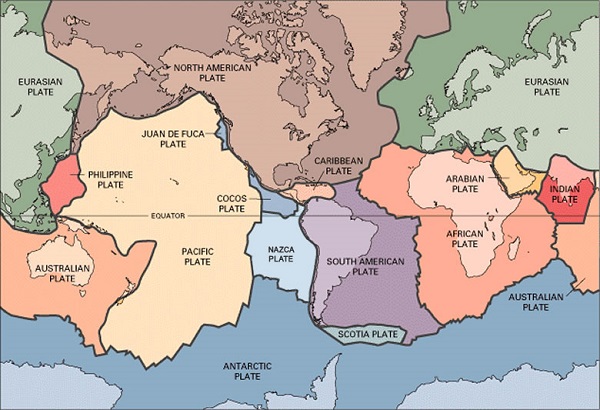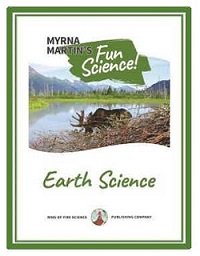Crustal Plates cover the surface of earth
Earth's crustal plates
Tectonic plates
Crustal plates, also known as tectonic plates, form the outer layer of the Earth. There are seven major plates and many smaller plates. Tectonic plates contain both the Earth's crust and uppermost part of the mantle.
Types of tectonic plates
There are two types of tectonic plates. Continental plates are made primarily of granitic rocks and are much thicker and older. Oceanic plates are thinner, heavier and younger. Together these plates form the lithosphere.

Earth's Tectonic Plates, USGS
Continental plates
Facts about continental plates
Igneous, sedimentary and metamorphic rocks form the continents. The basement rocks of the continents are granitic. The minerals in granitic rocks are lighter than the oceanic crust. The density of the continental crust is also less than the mantle.
Thickness of continental plates
The continental plates are between 25 and 70 kilometers thick. The thickest continental crust is located where great mountain ranges have formed like the Himalayas.


Click for More Information and to Order
oceanic crustal plates
Formation of the oceanic crust
Oceanic crust is constantly being formed at a mid ocean ridge. Molten rock from the mantle forms beneath spreading ridges where two crustal plates are separating. The lava erupts from vents forming pillow basalt as the plates move apart.
Movement of crustal plates
The oceanic crust moves across ocean basins like a conveyor belt to subduction zones where it is destroyed as it subducts beneath a lighter plate. The oceanic crust is only about 10 kilometers thick but is much denser and heavier than the continental crust.
Naming the tectonic plates
Seven major plates
Scientists have named the largest plates for the continents and oceans they contain. The seven largest plates are the North American Plate, Eurasian Plate, African Plate, Antarctic Plate, South American Plate, Indo-Australian Plate and the Pacific Plate.
Smaller crustal plates
The rest of the plates are important but smaller. Scientists do not agree on the number of these small plates. For example, off the coast of Northern California and Oregon you will find information listing the Blanco and the Juan de Fuca Plates. Other authorities list the entire landmass as one plate and call it the Juan de Fuca Plate.
Indo-Australian Plate
Some geologists also list the Indo-Australian Plate as the Australian Plate and the Indian Plate increasing the number of large important plates to eight instead of seven as mentioned above.
KIDS FUN Science Bookstore
Check out Myrna Martin's award winning textbooks, e-books, videos and rock sets. The Kids Fun Science Bookstore covers a wide range of earth science topics. Click here to browse.










